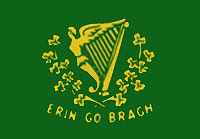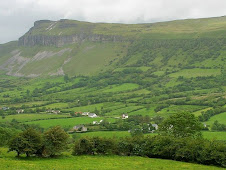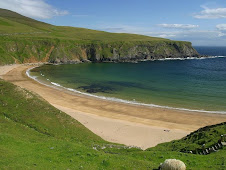Ireland as a whole has always been an expensive country to live in, and it still is. Prices here are on average at least twice as high as in most other EU countries, and often even higher. There is also a clear difference between Dublin and the rest of the island.
Ireland's Central Statistics Office (CSO) has just published its regular comparison of prices in Dublin with the costs for certain goods and services outside the capital. The report shows that many prices are "generally higher" in Dublin, while the prices of most services are listed as "significantly higher" in Dublin.
In May the CSO looked at 79 specific items. Average prices were higher in Dublin for 51 of these and lower for 27, while the price of only one item was the same in the capital than anywhere else. Prices of 34 items were more than 3% higher in Dublin than elsewhere.
On average, prices were 4.4% higher in Dublin than in the rest of Ireland, little changed from the 4.5% gap in the last survey, which was done in November 2008.
The biggest price gap was found in the barber and hairdressing business. A wash, cut and blow dry for a man is on average 47% more expensive in Dublin than elsewhere in the country, while the same service for a woman costs 23% more. A dry haircut for a man is 18.8% dearer in the capital.
These are staggering differences and show how much our capital is still dominated by greed. As I had only one haircut in Dublin in all my life - and that was almost 20 years ago - my experience in that field is well out date. But from my regular visits to the capital I can only confirm that the prices for almost everything are much higher than they are - for example - in Cork, Kilkenny or here in Waterford.
Prices of meat, fruit and vegetables are higher in Dublin, but fish prices are generally comparable with the rest of the country.
The average price of an uncooked chicken is an amazing 27.3% higher in Dublin, while back rashers are 24% and pork steaks 23.8% more expensive.
There follows a long list of food items that are dearer in Dublin, from which I will mention only a few: Cod fillets (+ 11.2%), eggs (+ 10.1%), tinned tomatoes (+ 8.2%), lamb chops (+ 8.1%), pork chops (+ 6.9%), mushrooms (+ 6.4%), onions (+ 6.4%), jam (+ 6.3%), 10 kg of potatoes (+ 6.0%), marmalade (+ 5.8%), broccoli (+ 5.6%), salmon (+ 4.8%), fresh tomatoes (+ 2.8%) - and so it goes on.
The situation in the drink sector is not better: Orange juice (+ 14.9%), draught lager (+ 12%), draught cider (+ 10.9%), draught ale (+ 10.1%), bottled lager (+ 9.9%), draught stout (+ 9.1%), bottled cider (+ 8.5%), vodka (+ 7.1%), whiskey (+ 5.7%) and wine (+ 5.1%).
Bread prices, however, were around 8% more expensive outside Dublin, which is most likely a result of the structure of our food industry. While in most European countries bread is usually baked locally in many independent bakeries, Ireland has very few independent local bakeries. Most of the bread consumed in this country is produced industrially in large factories, and most of them are situated in Dublin. Thus the supply route for bread is the shortest in Dublin, and the extra 8% bread costs outside the capital are likely created by the expenses caused by transport and distribution.
Prices of hotel accommodation and entertainment services such as cinema and theatres are 'significantly higher' in Dublin than elsewhere.
Petrol prices were 2.1% higher in Dublin, while Diesel was 1.7% more expensive.
The overall verdict is that - despite recession - Dublin is not just the capital of Ireland, but still the rip-off capital of Europe. So my advice is simple: Avoid Dublin as much as possible - and thus safe a lot of money.
The Emerald Islander
Ireland's Central Statistics Office (CSO) has just published its regular comparison of prices in Dublin with the costs for certain goods and services outside the capital. The report shows that many prices are "generally higher" in Dublin, while the prices of most services are listed as "significantly higher" in Dublin.
In May the CSO looked at 79 specific items. Average prices were higher in Dublin for 51 of these and lower for 27, while the price of only one item was the same in the capital than anywhere else. Prices of 34 items were more than 3% higher in Dublin than elsewhere.
On average, prices were 4.4% higher in Dublin than in the rest of Ireland, little changed from the 4.5% gap in the last survey, which was done in November 2008.
The biggest price gap was found in the barber and hairdressing business. A wash, cut and blow dry for a man is on average 47% more expensive in Dublin than elsewhere in the country, while the same service for a woman costs 23% more. A dry haircut for a man is 18.8% dearer in the capital.
These are staggering differences and show how much our capital is still dominated by greed. As I had only one haircut in Dublin in all my life - and that was almost 20 years ago - my experience in that field is well out date. But from my regular visits to the capital I can only confirm that the prices for almost everything are much higher than they are - for example - in Cork, Kilkenny or here in Waterford.
Prices of meat, fruit and vegetables are higher in Dublin, but fish prices are generally comparable with the rest of the country.
The average price of an uncooked chicken is an amazing 27.3% higher in Dublin, while back rashers are 24% and pork steaks 23.8% more expensive.
There follows a long list of food items that are dearer in Dublin, from which I will mention only a few: Cod fillets (+ 11.2%), eggs (+ 10.1%), tinned tomatoes (+ 8.2%), lamb chops (+ 8.1%), pork chops (+ 6.9%), mushrooms (+ 6.4%), onions (+ 6.4%), jam (+ 6.3%), 10 kg of potatoes (+ 6.0%), marmalade (+ 5.8%), broccoli (+ 5.6%), salmon (+ 4.8%), fresh tomatoes (+ 2.8%) - and so it goes on.
The situation in the drink sector is not better: Orange juice (+ 14.9%), draught lager (+ 12%), draught cider (+ 10.9%), draught ale (+ 10.1%), bottled lager (+ 9.9%), draught stout (+ 9.1%), bottled cider (+ 8.5%), vodka (+ 7.1%), whiskey (+ 5.7%) and wine (+ 5.1%).
Bread prices, however, were around 8% more expensive outside Dublin, which is most likely a result of the structure of our food industry. While in most European countries bread is usually baked locally in many independent bakeries, Ireland has very few independent local bakeries. Most of the bread consumed in this country is produced industrially in large factories, and most of them are situated in Dublin. Thus the supply route for bread is the shortest in Dublin, and the extra 8% bread costs outside the capital are likely created by the expenses caused by transport and distribution.
Prices of hotel accommodation and entertainment services such as cinema and theatres are 'significantly higher' in Dublin than elsewhere.
Petrol prices were 2.1% higher in Dublin, while Diesel was 1.7% more expensive.
The overall verdict is that - despite recession - Dublin is not just the capital of Ireland, but still the rip-off capital of Europe. So my advice is simple: Avoid Dublin as much as possible - and thus safe a lot of money.
The Emerald Islander







































No comments:
Post a Comment